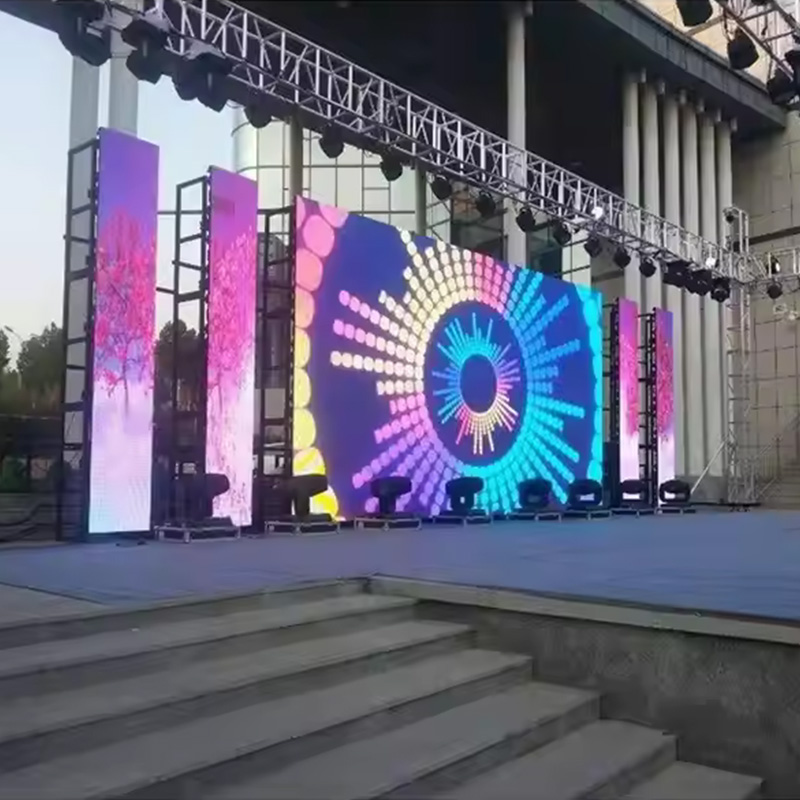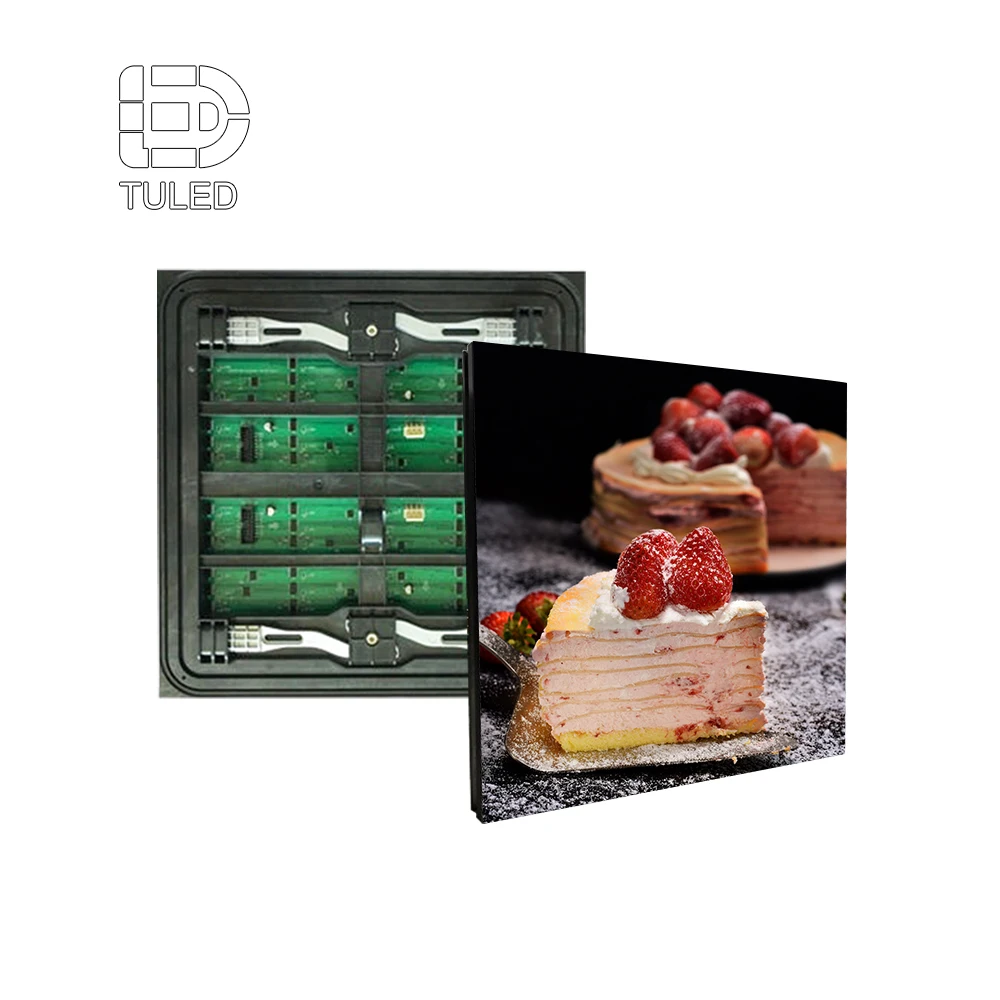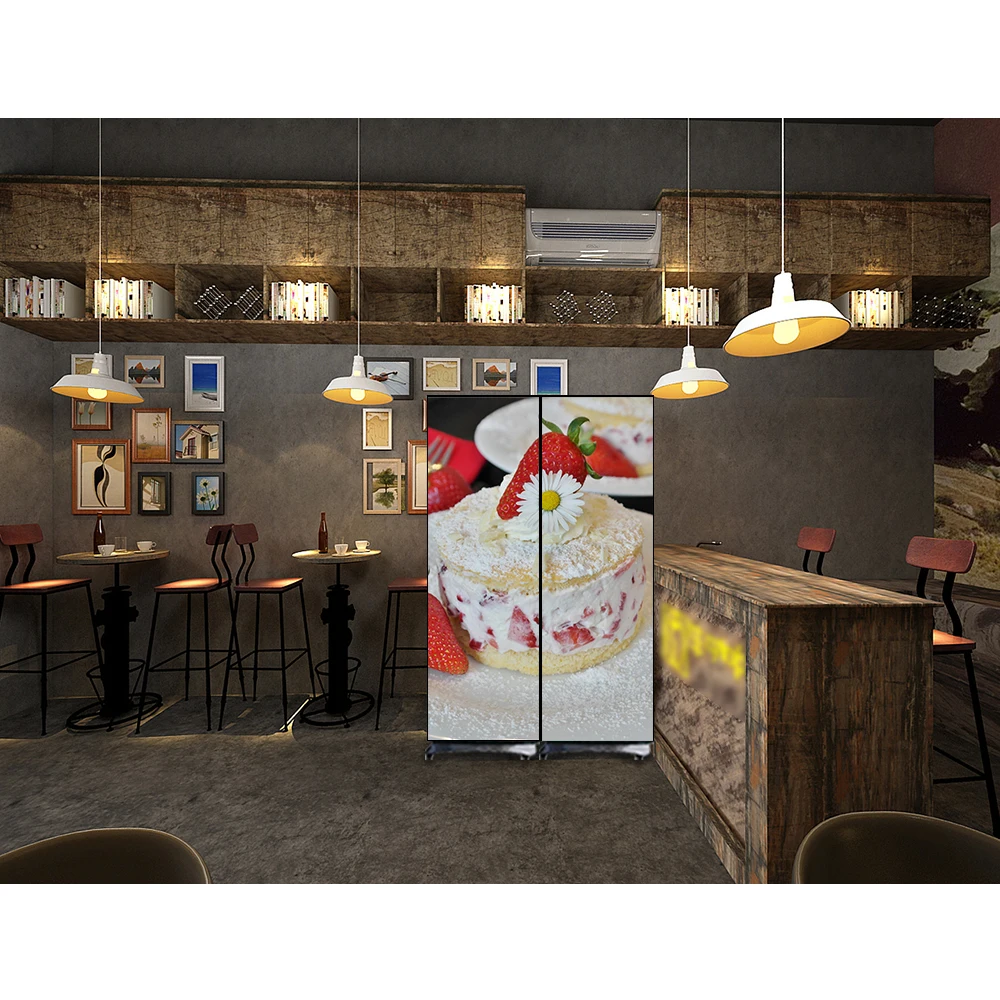ההבדל הבסיסי בין תצוגות LCD ל-LED
למה הצרכנים מתבלבלים בין טכנולוגיות תצוגה LCD ו-LED
רוב האנשים מתבלבלים בנושא זה בגלל שחברות שווקו מוצרים במקום להסביר את הפרטים הטכניים. מסכי LED הם למעשה רק לוחות LCD עם נורות LED מאחור, אך חברות החלו לקרוא להם "טלויזיות LED" בזמנו כדי להדגיש את חיסכון החשמל ואת העומק הקטן. לפי מחקר שנעשה בשנה שעברה, כשליש משני הקונים מאמינים ששתי הטכנולוגיות פועלות בצורה שונה לחלוטין, בעוד שבפועל שני הסוגים תלויים בחומרי הגביש הנוזלי אותם כדי לשלוט על תפוקת האור. הבלבול נמשך מכיוון שחנויות אינן טורחות להסביר לקונים שכל תצוגת LED שנמכרת היום היא בלב לוח LCD.
איך שתי הטכנולוגיות משתמשות בגבישים נוזליים אך שונות באור
צגי LCD ו-LED משתפים מבנה שכבות עם גבישים נוזליים בין זכוכית מקוטבת. ההבדל המרכזי נמצא במקורות האור שלהם:
- צגי LCD מסורתיים משתמשים בנורות פלואורסצנטיות (CCFL) מאחור שכבת הגבישים
- צגים LED משתמשים בדיאודות פולטות אור (LEDs) או לאורך השוליים (הארה שולית) או ברשתות מאחוריה הלוח (הארה מלאה)
השינוי הזה הפחית את צריכה האנרגיה ב-40% תוך איפשור פרופילים דקים יותר ויכולות כיווץ אור מקומי.
תפיסה שוקית: המעבר מטלויזיות 'LCD' ל-'LED' על אף טכנולוגיה ליבה דומה
בין השנים 2010–2020, הפך המונח "טלויזיית LED" לסממן של מודלים פרימיום, גם כאשר טכנולוגיית ה-LCD שבבסיסה לא השתנתה. יצרנים הניחו דגש על היתרונות הסביבתיים של דיודות(LED), מהלך אסטרטגי בעת שצמיחה של 22% לשנה ברכישות בעלות מודעות סביבתית (DisplayMate 2023). השם החדש עבד: כיום, 92% מהתlevisionים שנמכרים מתוארים כ-"LED", למרות שהם מסכי נוזל עם תאורת רקע דיאודית.
התפתחות שמות הסחר בשיווק מסכים לצרכן
הטרמינולוגיה בתעשייה התפתחה בשלושה שלבים:
- בשנות ה-2000: "LCD" התייחס למסכי פלטת ששההחליפו את שפופרות ה-CRT
- בשנות ה-2010: "LED" הדגיש שדרוגי תאורה אחורית ללא שינוי בפנל עצמו
- בשנות ה-2020: "QLED" ו-"Mini-LED" ממשיכים להסתיר את בסיס ה-LCD
התבנית הזו יוצרת הבחנה מלאכותית, כאשר 74% ממונחי השיווק מתייחסים לשדרוגי תאורה אחורית ולא לטכנולוגיית התצוגה העיקרית (Consumer Reports 2024).
בהבהרת תפיסות שגויות בבחירת מסך LED לעומת LCDتقليדי
למבקשים השווים בין LED ו-LCD:
- כל טלוויזיות ה-LED המודרניות הן מסכי LCD עם תאורת רקע דיאודית
- צגים אמיתיים של LED (כגון שלטי פרסום מסחריים) כוללים פיקסלים שפולטים אור בעצמם – טכנולוגיה שונה
- יתרונות עיקריים של מסכי LCD עם תאורת רקע LED כוללים בהירות גבוהה יותר ב-300–500 ניט, וטווח צבעים רחב יותר ב-50% בהשוואה למודלים עם CCFL
יש להעדיף תאורת רקע LED בשיטת Full-Array לתוכן HDR, ומודלים עם תאורת רקע צדדית (Edge-lit) להתקנות בהן חסר מקום
תאורת הרקע במקורות תצוגה LED: כיצד טכנולוגיית ה-LED שינתה את לוחות ה-LCD
איך תוארוות הרקע LED החליפו את CCFL בלוחות LCD
עליתן של תצוגות LED שינתה לחלוטין את אופן פעולת מסכי LCD, והחליפה את אזורי האור האחוריים הישנים מסוג CCFL לדיודות פולטות אור יעילות בהרבה. שני הטכנולוגיות עדיין מסתמכות על לוחות קריסטל נוזלי, אך כאשר יצרנים החלו להשתמש ב-LED בין השנים 2010–2015, הם עמדו בפני ירידה משמעותית בשימוש באנרגיה – כ-40 אחוז, לפי דוח של משרד האנרגיה של ארצות הברית משנת 2023. בנוסף, ניתן היה לייצר תצוגות חדשות אלו דקיקות בהרבה מאשר בעבר. מה הופך את המעבר הזה לחשוב כל כך? ובכן, ל-CCFL הקלאסיים היו כמה בעיות חמורות. הם הכילו כספית, שהיא כמובן לא טובה לסביבה. תוחלת החיים שלהם הייתה רק כ-30,000 שעות לכל היותר, והאינספור wasn't very even across the screen leading to poor contrast ratios that just didn't look right.
סוגי תאורת רקע בשימוש בתצוגות LED: מערך מלא לעומת תאורה צדדית
תצוגות LED מודרניות משתמשות בשני תיאורים עיקריים של תאורת רקע:
- תאורת רקע של מערך מלא עם לדים המפוזרים מאחוריה של הלוח כולו, ומאפשרים כיוון מקומי מדויק לצלילות שחורות עמוקות יותר (יחס ניגודיות של עד 5,000:1)
- מערכות תאורה צדדית עם לדים המותקנים בשולי המסך, מה שמאפשר פרופילים דקים במיוחד על חשבון ירידה של 18–22% באחידות בהירות מקסימלית (DisplayMate 2023)
ניתוח תעשייתי מראה כי 72% מהטלויזיות בפחות מ-1,000 דולר משתמשות בתאורה צדדית, בעוד ש-89% מהדגמים היוקרתיים משתמשים בעיצובי מערך מלא
תאורת LED ישירה לעומת תאורת LED צדדית: הבדלי ביצועים, עלות ועיצוב
מערכות תאורה אחורית עם מערך מלא בהחלט מספקות תוצאות טובות יותר ב-HDR, אם כי הן באות במחיר גבוה בכ-35 עד 50 אחוז בהשוואה לדגמים בעלי תאורה צדדית בייצור. רוב הסמרטפונים וצגי המחשב הזולים בוחרים בתאורה צדדית מאחר שצרכנים מעוניינים בסילואט דק גם אם זה על חשבון איכות תמונה מסוימת. אבל רגע, יש משהו מעניין מדוח משנת 2023 של Consumer Reports שהראה שצגים בעלי תאורה צדדית מוחזרים כמעט פי שלושה יותר מהרגיל, מכיוון שצרכנים מבחינים באפקטים מטרידים של 'עיבוי' (clouding) בעת צפייה בתוכן כהה. זה הגיוני עבור מקצוענים העוסקים בעבודה עם צבעים, כמו רדיולוגים הקוראים רנטגנורים או מעצבים גרפיים העוסקים בעבודה להדפסה. הם ממשיכים להיצמד לתאורה אחורית עם מערך מלא, גם כאשר ללוחות האלה יש פרופיל עבה יותר. עובי פשוט אינו גורם חשוב כשדיוק הוא העיקר.
עקרון הפעולה של תצוגות LCD ו-LED: השוואה שלב אחר שלב
תהליך ייצור האור שלב אחר שלב בתצוגות LCD ו-LED
שתי האפשרויות הטכנולוגיות משחקות עם אור, למרות שהן עושות זאת בדרכים שונות לחלוטין. עבור מסכי LCD, תמיד יש את התאורה האחורית הלבנה מאחורי כל דבר, בין אם מדובר בדברים של CCFL מהדור הישן או בגרסאות LED חדשות יותר. התמונה עצמה נוצרת כאשר האור הזה עובר דרך תריסי הגביש הנוזלי. מה קורה אחר כך? ובכן, הגבישים האלה בעצם מסתובבים כאשר חשמל פוגע בהם, ומאפשרים לכמויות מסוימות של אור לעבור דרך המסננים האדומים, הירוקים והכחולים שכולנו מכירים כל כך טוב. פאנלי LED אמיתיים חותכים את כל עניין התיווך הזה. כל דיודה זעירה פשוט נדלקת ישירות בצבע משלה כאשר חשמל עובר דרך חומרים כמו מוליכים למחצה GaAsP או InGaN. אין צורך בכל השלבים הנוספים האלה.
איך מסכי LCD מייצרים אור: התפקיד הקריטי של האורות האחוריים בפאנלים שאינם משדרים אור
פנלים של LCD לא יכולים לייצר אור בעצמם, ולכן הם תלויים לחלוטין באור אחורי במה שאנחנו רואים ובאיך הצבעים מופיעים. בימינו, רוב מסכי ה-LCD משתמשים באור אחורי LED במקום בטכנולוגיה הישנה יותר. דיודות הפולטות אור לבן ממוקמות או לאורך הקצוות או מפוזרות על פני כל שטח הלוח, ומאירות דרך המבנים הקטנים של הגבישים. מחקרים מראים שמעבר לאור אחורי LED חוסך כשליש מהאנרגיה בהשוואה לנורות CCFL הישנות שכולם השתמשו בהן בעבר. אבל עדיין יש בעיה. האור צריך לעבור דרך מספר מסנני קיטוב, מה שמחליש אותו בהכרח. כלומר, LCD-ים פשוט לא יכולים להתאים לרמות ניגודיות של מסכים כמו OLED, שבהן כל פיקסל זורח באופן עצמאי ללא צורך בכל השכבות האלו.
התפתחויות באור אחורי LED: מאור צדדי ל-Mini-LED
סוגי אור אחורי LED: Full-Array, אור צדדי ו-Mini-LED בהשוואה עם דוגמאות מהעולם האמיתי
בימינו, תאורת רקע LED מגיעה בשלושה סוגים עיקריים. דגמים עם מערך מלא מפזרים את דיודות ה-LED באופן אחיד מאחורי לוח התצוגה, מה שמאפשר לייצרנים לכוונן במדויק את רמות בהירות. יש טלוויזיות מתקדמות שמכילות יותר מאלף אזורי כיווץ אור נפרדים! קיימות גם תוספות בהשראת שפה שמציבות את אבני האור הקטנות הללו לאורך שולי המסך, מה שיוצר מסכים דקים בהרבה, אך יוצר בעיות בהשגת תאורה אחידה על מסכים גדולים. מה ששינה הכל היה הטכנולוגיה של Mini LED. דיודות זעירות בגודל 50 עד 200 מיקרומטר אלו מתארחות בצורה צפופה באחורית לוחות LCD. חברות כמו Hisense ו-Samsung החלו להשתמש בגירסאות RGB של דיודות מיניאטורות אלו, וטוענות שהן משפרות את דיוק הצבעים ב поряд גודל של 40% לעומת מסכי שפה רגילים. בעוד שזה בהחלט עוזר ללוחות LCD להתחרות מול OLEDs מבחינת ניגודיות, זה עדיין לא פותר לחלוטין בעיות כמו שאריות תמונה שמטרידות מסכי OLED.
האם LED מואר מקצה inferior עבור תוכן בטווח דינמי גבוה? ניתוח של מחלוקת
כשמדובר במסכיים מוארים מקצה לעומת ביצועי HDR, הבעיה העיקרית היא באמת במגבלות ההעמעום המקומי. לוחות מוארים מקצה מגיעים בדרך כלל לבערך 600 עד 800 ניט בהירות, אך מתמודדים בצורה גרועה עם רק 10 עד 20 אזורי העמעום, מה שגורם לאפקטים מובילים של זיהום אור (blooming) בעת צפייה בתמונות כהות. טכנולוגיית Mini LED פותרת בעיה זו על ידי הטמעת יותר מ-2000 אזורי העמעום בודדים, המאפשרים שליטה מדויקת בהרבה באור ברמת הפיקסלים, מה שהופך את המסכים הללו למתאימים בהרבה לתוכן כמו Dolby Vision. ובכל זאת, יצרנים ממשיכים להשתמש בעיצובים מוארים מקצה לטלוויזיות ומסכי מחשב במחיר נגיש, שכן עלות ייצורם נמוכה בכ-30 אחוזים. הצוות ב-CNET אמר זאת די טוב דווח משנת 2024, שאמר משהו בסגנון: Mini LED אינו רק צעד קטן נוסף בטכנולוגיית תצוגה, אלא למעשה משנה לגמרי את המשחק מבחינת אופן שבו מסכי LCD מטפלים בחומרי HDR.
למה רוב 'תאי תצוגה LED' עדיין הם LCD עם תאורת רקע LED: פרדוקס של ענף
רוב האנשים עדיין חושבים שהם קונים מסכי LED כשבעצם הם מקבלים לוחות LCD עם תאורת רקע LED. העסק האמיתי, שבו פיקסלים פולטים את אורם בעצמם, מופיע רק בפאנלים הדיגיטליים המתקדמים שאנו רואים על הכבישים המהירים ובטלוויזיות מהמעלה הראשונה בחנויות אלקטרוניקה. למה זה קורה? ובכן, תאורות הרקע LED שיפרו משמעותית את תצוגת ה-LCD. הן מספקות בהירות גדולה בכ-50% בהשוואה לתאורות הרקע הישנות מסוג CCFL וחיות פי שניים יותר זמן. יצרנים ממשיכים להשתמש בקווי הייצור הקיימים של LCD, אך שיווק לשדרוגים אלו כמשהו חדש בשם "טכנולוגיית LED" במקום להציג אותם כפי שהם באמת.
בחירת בין תצוגת LED ל-LCD: הנחיות מעשיות להחלטות B2B ו לצרכן
הערכת בהירות, ניגודיות ויעילות בצריכת חשמל ב-LED לעומת LCDتقليדי
כשמדובר בטכנולוגיית תצוגה, מסכי LED מודרניים באמת מבליטים את עצמם לעומת לוחות LCD ישנים שמבוססים על CCFL בכמה דרכים חשובות. בואו נתחיל עם רמות בהירות. תאורי ה-LED יכולים להגיע ל anywhere בין 500 ל-1500 ניט של בהירות, בעוד שטכנולוגיית ה-LCD הישנה מצליחה רק כ-250 עד 400 ניט. זה מה שמשנה את כל ההבדל כשנרצה לראות משהו על המסך בתנאי אור יום עז, בין אם מדובר בתצוגת חנות או בסוג כלשהו של התקן פרסום בחוץ. וגם יחס הניגודיות צריך להילקח בחשבון. דגמים של LED במערך מלא מספקים בדרך כלל יחס ניגודיות של יותר מ-5000:1, בעוד שרוב לוחות ה-LCD barely מגיעים ל-1000:1. מה זה אומר מבחינה מעשית? אז, אזורים כהים נראים הרבה יותר כהים במסכים החדשים האלה, ולכן מקצוענים בתחומים כמו הדמיה רפואית או ייצור וידאו עברו במידה רבה לטכנולוגיית LED בעבודתם.
יעילות בצריכת חשמל נשארת היתרון האופרציוני החזק ביותר של LED, אשר צורך 30% פחות אנרגיה בהשוואה למערכות LCD ישנות לפי מדדי משרד האנרגיה (2022). הפער ביעילות מתרחב ביישומים מסחריים עם הצגה מתמדת, שבהם מחזור החיים של 100,000 שעות של LED מקטין את עלויות ההחלפה.
התאמת טכנולוגיית תצוגה לתרחישי שימוש: משחקים, מדיה ויישומים משרדיים
| שימוש | טכנולוגיית מומלצת | הנמקה עיקרית |
|---|---|---|
| משחקים תחרותיים | FUL ARRAYS LED | זמן תגובה של 0.5 מילישנייה, רענון של 240Hz |
| מדיה HDR | Mini-LED LCD | מעל 1,000 אזורי כיווץ לאפקט ניגודיות קולנועי |
| משרדים/חינוך | מסך LCD סטנדרטי | פתרון בעל עלות-יעילות עבור משימות טקסט/אינטרנט |
לעובדים מקצועיים בתחום היצירתי, מסכי LED עם תאורת שפה מספקים אחידות צבעים מספקת בתקציבים ממוצעים. עם זאת, קונים עסקיים שממקדים בתשואה על ההשקעה צריכים לשים לב ש- LCD מציע עלות ראשונית נמוכה ב-42% בהתקנות קירות וידאו גדולים, על אף עלויות אנרגיה גבוהות יותר לאורך זמן.
שאלות נפוצות
מה ההבדל העיקרי בין מסכי LCD למסכי LED?
ההבדל העיקרי נמצא בטכנולוגיית התאורה האחורית. מסכי LCD משתמשים בנורות פלואורסצנטיות (CCFL) בעוד שמסכי LED משתמשים בדיאודות פולטות אור (LED) לצורך תאורה, מה שמציע יתרונות כמו יעילות אנרגטית טובה יותר ופרופיל דק יותר.
האם טלוויזיות LED משתמשות באותה טכנולוגיה כמו LCD?
כן, טלוויזיות LED הן למעשה מסכי LCD עם תאורת רקע LED. הן משתמשות בגבישים נוזליים לשליטה באור, וייכולות להיות עם תאורה מקצה או עם תאורה של מערך מלא.
האם מסכי LED עם תאורה מקצה טובים עבור תוכן HDR?
מסכי LED עם תאורה מקצה פחות יעילים בהandle תוכן HDR בשל אזורים מוגבלים של כיווץ אור מקומי, מה שמשפיע על בהירות וניגודיות. מערך מלא או Mini-LEDs מספקים תוצאות טובות יותר עבור תוכן זה.
איך אירור אחורי LED משתפר לעומת CCFL ב-LCD?
הairoר האחורי LED מציע צריכת חשמל נמוכה בכ-40%, טכנולוגיה ללא כספית, מחזור חיים ארוך יותר ופרופיל דק יותר בהשוואה לאירור אחורי CCFL.
למה רבים מתבלבלים בין תצוגות LED ו-LCD?
רבים מתבלבלים ביניהם בגלל אסטרטגיות שיווק שמדגישות את האירור האחורי LED כמאפיין, מבלי להסביר ששתי הטכנולוגיות מבוססות LCD.











